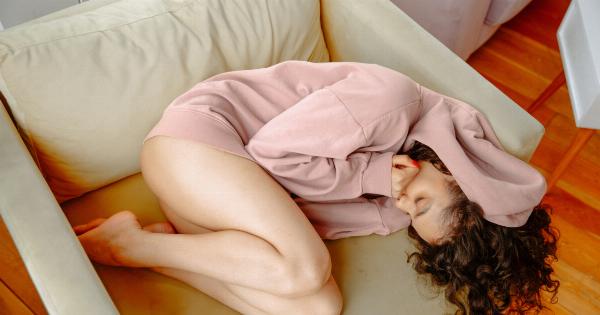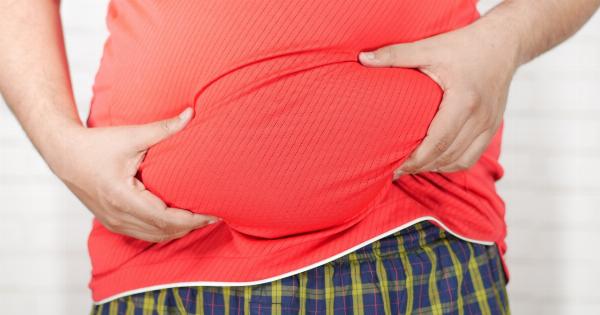Every woman experiences periodic pains at some point in her life. For some, it may be a minor inconvenience, while for others, it can be an excruciating experience.
Understanding these pains and their causes can help women manage their menstrual cycles more effectively. In this article, we will delve into the different types of periodic pains, their possible causes, and ways to alleviate them.
Dysmenorrhea: The Common Monthly Visitor
Dysmenorrhea is the medical term for menstrual cramps, which affect a majority of women during their reproductive years. These cramps are characterized by a dull or throbbing pain in the lower abdomen that can range from mild to severe.
Some women also experience symptoms such as nausea, vomiting, diarrhea, and headaches during their periods.
The pain associated with dysmenorrhea is caused by the release of prostaglandins, chemicals that trigger contractions in the uterus. These contractions help expel the lining of the uterus, leading to the expulsion of blood and tissue.
However, when the levels of prostaglandins are elevated, they can cause excessive or prolonged contractions, resulting in pain.
Primary Dysmenorrhea: The Natural Process
Primary dysmenorrhea refers to menstrual cramps that occur without any underlying medical condition. It is the most common type of period pain and usually begins within a year or two of a girl’s first period.
The intensity of the pain can vary from cycle to cycle and may decrease with age or after childbirth.
During primary dysmenorrhea, the uterus releases a higher amount of prostaglandins, leading to stronger contractions and more severe pain.
Factors such as smoking, stress, and a family history of dysmenorrhea can increase the likelihood of experiencing primary dysmenorrhea.
Secondary Dysmenorrhea: When Something’s Amiss
Secondary dysmenorrhea refers to menstrual cramps caused by an underlying medical condition. Unlike primary dysmenorrhea, the onset of secondary dysmenorrhea can occur at any age.
Conditions that can cause secondary dysmenorrhea include endometriosis, uterine fibroids, pelvic inflammatory disease, and adenomyosis.
These conditions can lead to increased inflammation, scarring, or abnormalities in the reproductive organs, resulting in more severe and prolonged pain.
It is important to consult a healthcare provider if the pain suddenly worsens or if it significantly affects daily activities, as it may be a sign of an underlying problem.
Managing Periodic Pains: Tips and Techniques
While periodic pains are a common part of a woman’s life, there are ways to manage and alleviate the discomfort. Here are some effective tips and techniques:.
1. Heat Therapy:
Applying a heating pad or taking a warm bath can help relax the muscles in the lower abdomen and reduce cramping.
2. Over-the-counter Pain Relievers:
Nonsteroidal anti-inflammatory drugs (NSAIDs) such as ibuprofen or naproxen sodium can help reduce the production of prostaglandins and alleviate pain.
3. Exercise and Movement:
Engaging in physical activity, such as brisk walking or gentle yoga, can help increase blood flow and release endorphins, which act as natural painkillers.
4. Dietary Modifications:
Avoiding foods that are high in salt, caffeine, and sugar can help reduce water retention and bloating, which are commonly associated with menstrual pain.
5. Herbal Remedies:
Some herbs, such as ginger, chamomile, and cinnamon, have natural anti-inflammatory properties and can provide relief from menstrual cramps.
6. TENS Therapy:
Transcutaneous electrical nerve stimulation (TENS) involves applying low-voltage electrical currents to specific areas of the body to relieve pain. This technique has shown promising results in managing menstrual pain.
7. Hormonal Birth Control:
For women with severe menstrual pain, hormonal birth control methods such as pills, patches, or intrauterine devices (IUDs) can help regulate hormone levels and reduce the severity of cramps.
8. Stress Management:
Practicing stress-reducing techniques such as meditation, deep breathing exercises, or psychotherapy can help alleviate menstrual pain triggered or exacerbated by stress.
9. Acupuncture:
Ancient Chinese therapy, acupuncture, involves inserting thin needles into specific points on the body. It is believed to restore the balance of energy, or qi, and has been found beneficial in managing period pain.
10. Adequate Rest and Self-care:
Getting enough sleep and practicing self-care can help manage hormonal imbalances, reduce stress, and contribute to overall well-being, which can indirectly alleviate menstrual pain.
Conclusion
Periodic pains are a natural part of a woman’s reproductive cycle. While some discomfort is expected, excessive pain can be a sign of an underlying condition.
Understanding the types and causes of periodic pains can help women identify when medical attention is necessary. By using various management techniques, women can reduce the impact of menstrual pain on their daily lives and achieve a better quality of life during their periods.



























